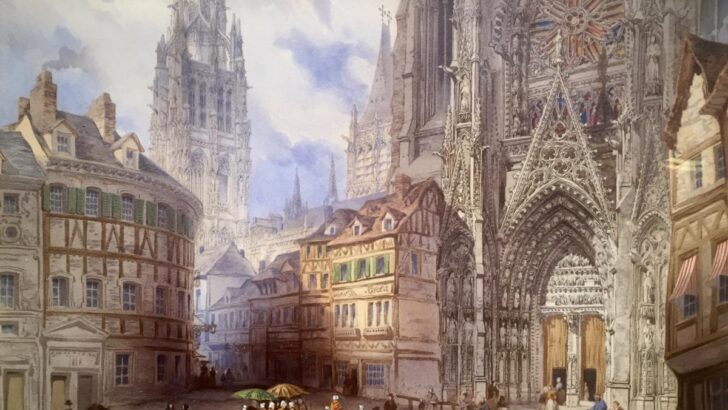A History of Alsace 1871 – 1939 by Liam Murphy (Kingdom Books 2023).
Alsace and Lorraine have been described by historians as “the shuttlecock of Europe”. Both regions passed between Germany and France on five occasions.
Alsace is located in eastern France on the west bank of the upper Rhine and borders Switzerland and Germany. It traces its origins back to the German Holy Roman Empire. But it was gradually absorbed into Bourbon France from 1648 onwards. Following the Franco/Prussian War of 1870-1, it was annexed by the German Empire in 1871.
After the defeat of Germany in 1918 it was returned to France under the terms of the Treaty of Versailles. The Wehrmacht – Germany’s armed forces – overran most of western Europe in 1939–40. Alsace found itself incorporated into the Third Reich in 1940. Then after the defeat of Germany in World War II Alsace once again was returned to France in 1945.
Detailed
Liam Murphy provides a detailed account of how the Alsatians coped with their various political overlords. All the while they attempted to retain as best they could their culture and language. He indicates how the policies imposed by the Germans and the French to hasten the absorption of Alsace were counter-productive.
In July 1871 Bismarck, the “Iron Chancellor”, initiated the Kulturkampf – an attempt to suppress and remove the influence of the Catholic Church across the German Empire, parish clergy were controlled, religious orders exiled. By 1875 it had failed. The attempt to impose it in Alsace had been strongly resisted.
In particular, the Alsatian population, which was 75% Catholic, was determined not to lose their Catholic school-system. The struggle over control of those schools did little to promote loyalty to Germany in Alsace.
When the French troops entered Alsace in November 1918 there were scenes of jubilation. But the France of 1918 was very different from the France of pre-1870-1, the Catholic-minded Second Empire had given way to the Third Republic. It was the France of laicism and of a closely unified nation-state, with clerical controls very similar to the Falk Laws. Thus, its key policy for Alsace was to assimilate it into France. There were to be no concessions for ‘particularism’ or Catholic schools.
The new French policy was strongly opposed in Alsace and had to be abandoned. However, this did not happen before immense damage had been done to French prestige. It also prompted a significant rise in support for local political parties, and even the beginning of an autonomist movement. (Echoes here of what went on in Brittany.)
For Alsatians their time subject to the Nazi administration during World War II was traumatic. They had little empathy for the Nazi ideology and in particular their aggressive anti-Church policies (which had long been part of the Nazi programme).
After occupying Alsace in 1940, Germany conscripted 130,000 men. Known as the Malgré-nous, against their will, they were sent to fight on the Russian front, that quagmire of butchery. Of these 30,000 were killed, 10,500 reported missing, and the rest were taken prisoner.
Oppresive regime
On the home front the rest of the Alsatians had to endure a harsh oppressive regime. The war resulted in over 50,000 Alsatians losing their lives – proportionately more than three times that for the rest of France. The wartime Nazi rule led to an embracing of things French and a repudiation of things German. The prisoners of war held in the camps of Stalinist Russia were slow to return home.
Murphy, in an aside, recalls being made aware in no uncertain terms of this prevailing Alsace attitude: “I went on a wine trip to Alsace in 2001. I had a pleasant conversation with the vineyard owner. We spoke in both English and French and at the end of the lunch I wished him all the best in both English and French and I also said ‘Alles Gute’ which means ‘all the best’ in German. He remarked to me that to say that to an Alsatian was equivalent to saying to an Irish person: ‘You are British, of course!’.”
Liam Murphy is able to conclude this excellent study on a happier note. Since the 1950s Alsace and particularly Strasbourg, its largest city, has benefited from its location between a reconciled France and Germany within the context of the European Community. The territory of Alsace is at the core of the EU and Strasbourg is where the European Parliament meets.


 Strasbourg Cathedral
painted in 1850.
Strasbourg Cathedral
painted in 1850. 